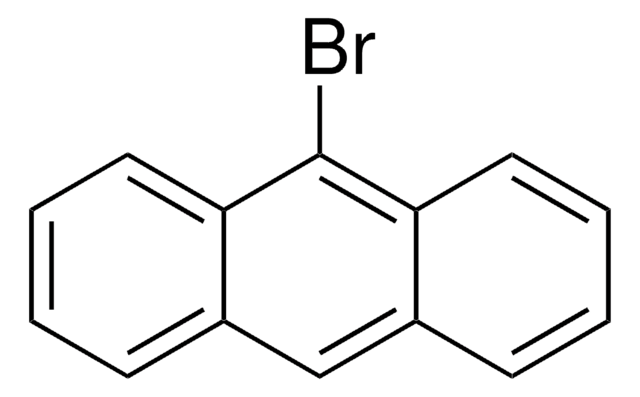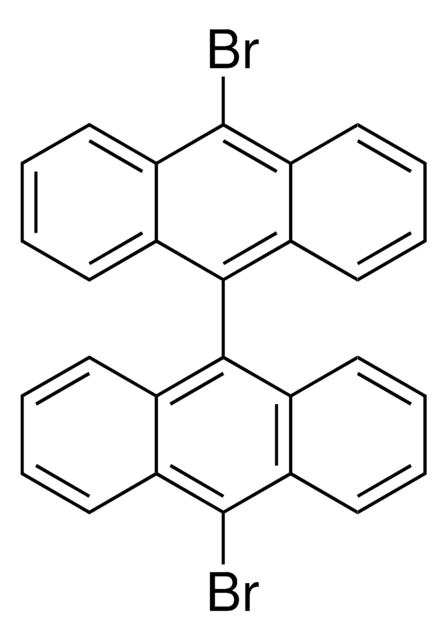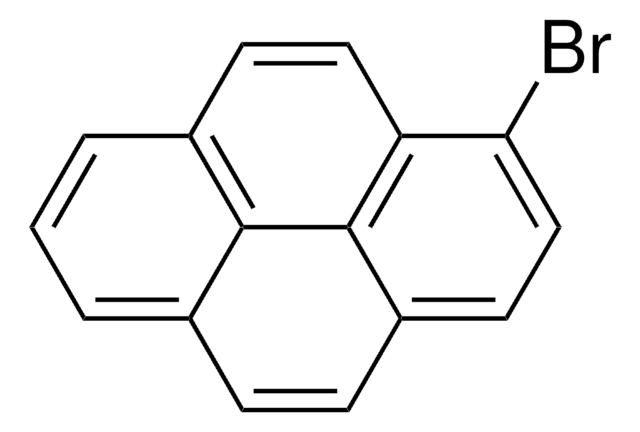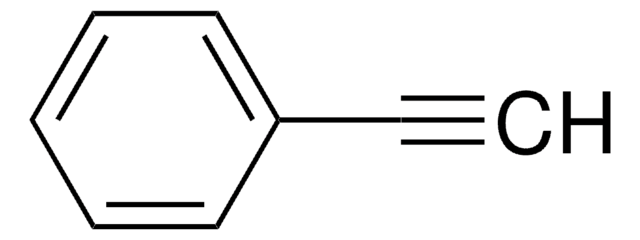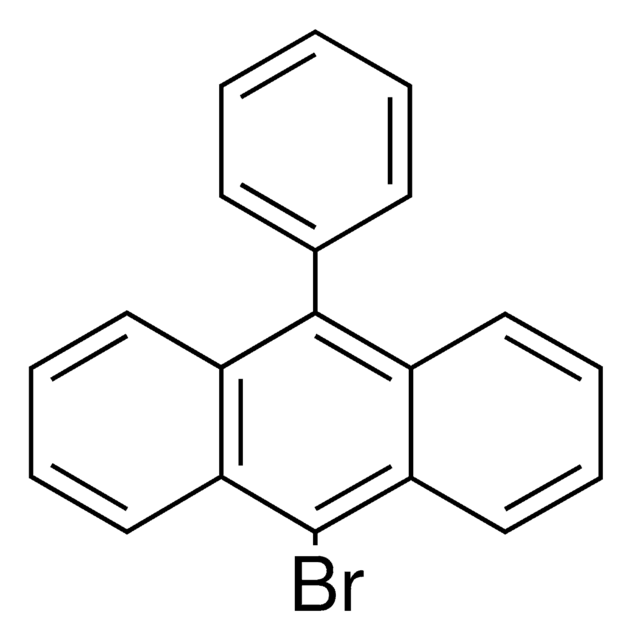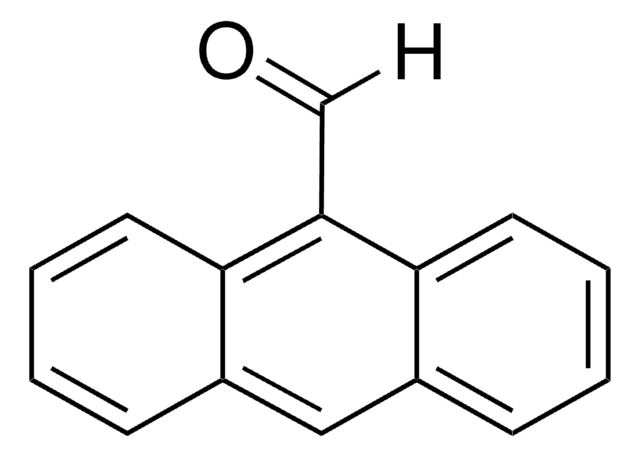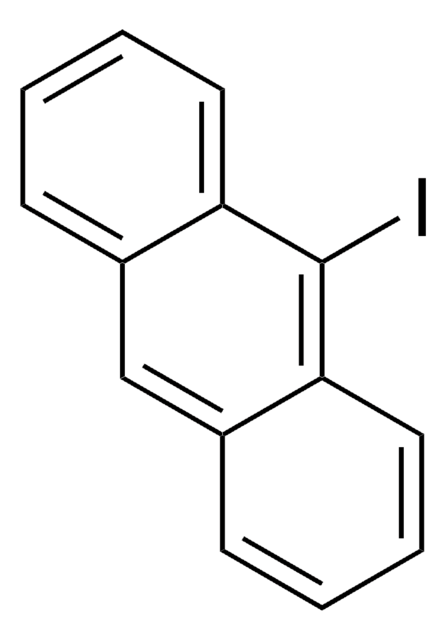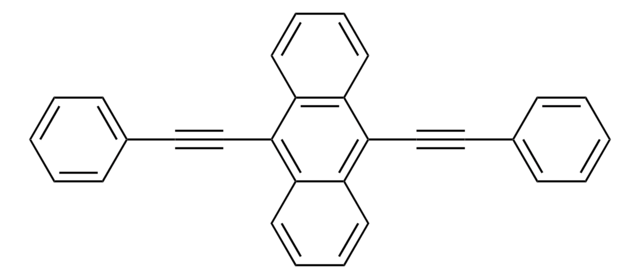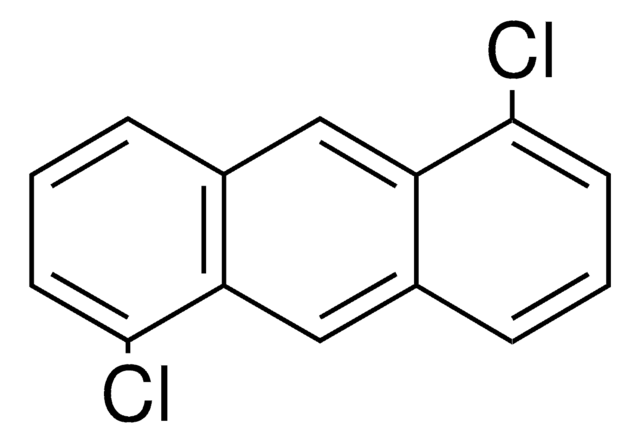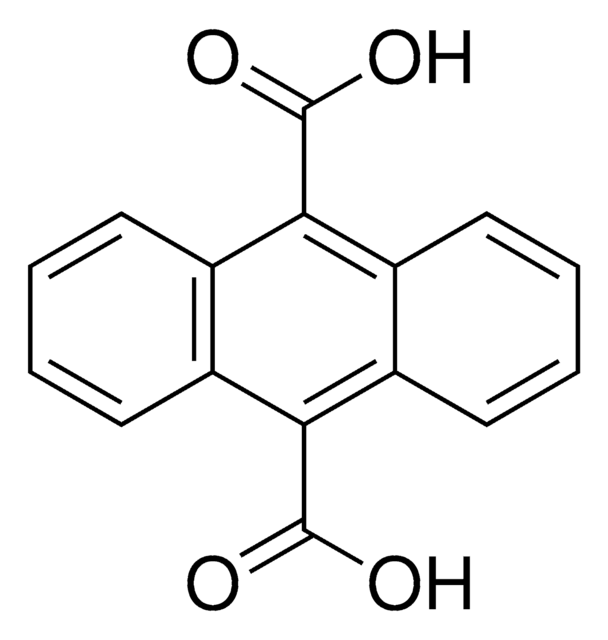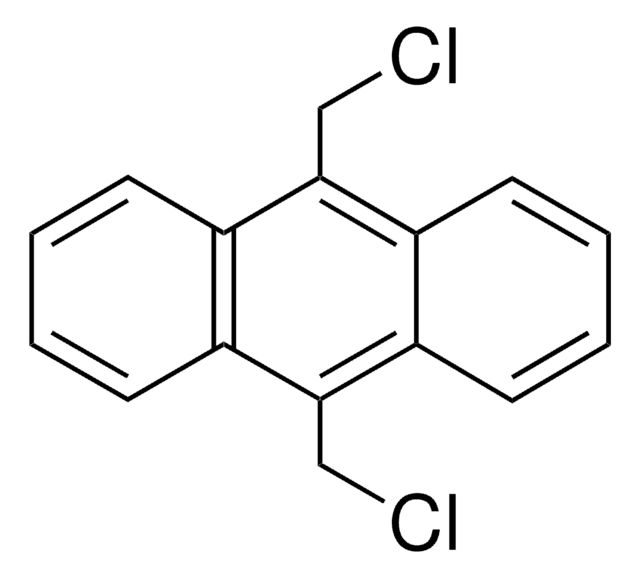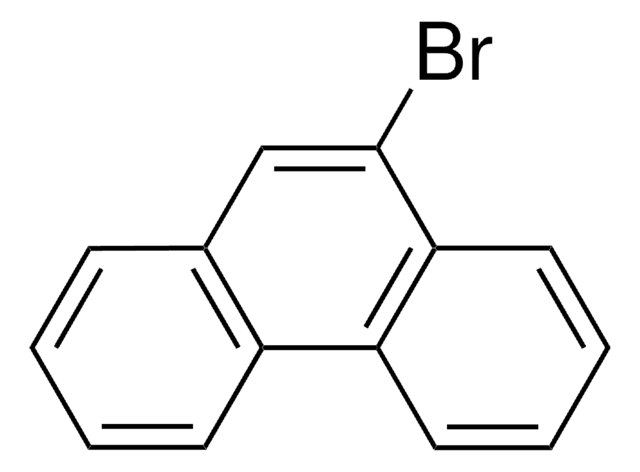All Photos(2)
About This Item
Empirical Formula (Hill Notation):
C14H8Br2
CAS Number:
Molecular Weight:
336.02
EC Number:
MDL number:
UNSPSC Code:
12352100
PubChem Substance ID:
NACRES:
NA.22
Recommended Products
Assay
98%
form
fibers
mp
223-224 °C (lit.)
SMILES string
Brc1c2ccccc2c(Br)c3ccccc13
InChI
1S/C14H8Br2/c15-13-9-5-1-2-6-10(9)14(16)12-8-4-3-7-11(12)13/h1-8H
InChI key
BRUOAURMAFDGLP-UHFFFAOYSA-N
Related Categories
General description
9,10-Dibromoanthracene is an aryl dihalide compound widely used as a precursor to synthesize various organic compounds.
Signal Word
Warning
Hazard Statements
Precautionary Statements
Hazard Classifications
Aquatic Acute 1 - Aquatic Chronic 1
Storage Class Code
11 - Combustible Solids
WGK
WGK 3
Flash Point(F)
Not applicable
Flash Point(C)
Not applicable
Personal Protective Equipment
dust mask type N95 (US), Eyeshields, Gloves
Certificates of Analysis (COA)
Search for Certificates of Analysis (COA) by entering the products Lot/Batch Number. Lot and Batch Numbers can be found on a product’s label following the words ‘Lot’ or ‘Batch’.
Already Own This Product?
Find documentation for the products that you have recently purchased in the Document Library.
Customers Also Viewed
Rong Jin et al.
Journal of chromatography. A, 1509, 114-122 (2017-06-18)
Isotopic dilution gas chromatography combined with high resolution mass spectrometry (GC/HRMS) has overwhelming advantages with respect to the accuracy of congener-specific ultratrace analysis of complex persistent organic pollutants (POPs) in environmental matrices. However, an isotopic dilution GC/HRMS method for analysis
Jian-Lin Sun et al.
Ecotoxicology and environmental safety, 113, 31-37 (2014-12-09)
Halogenated polycyclic aromatic hydrocarbons (HPAHs) have been reported to occur widely in urban air. Nevertheless, knowledge about the human health risk associated with inhalation exposure to HPAHs is scarce so far. In the present study, nine HPAHs and 16 PAHs
Our team of scientists has experience in all areas of research including Life Science, Material Science, Chemical Synthesis, Chromatography, Analytical and many others.
Contact Technical Service